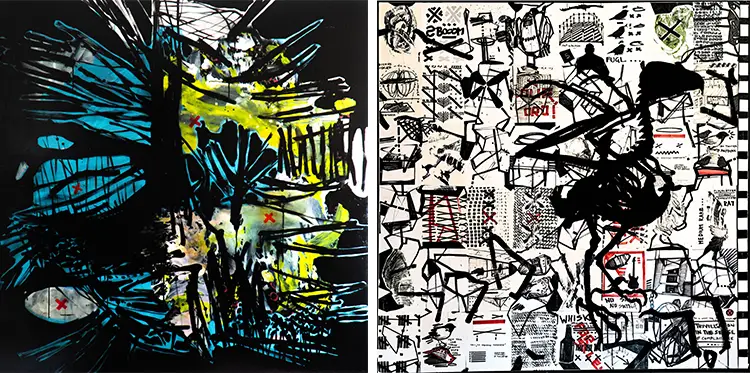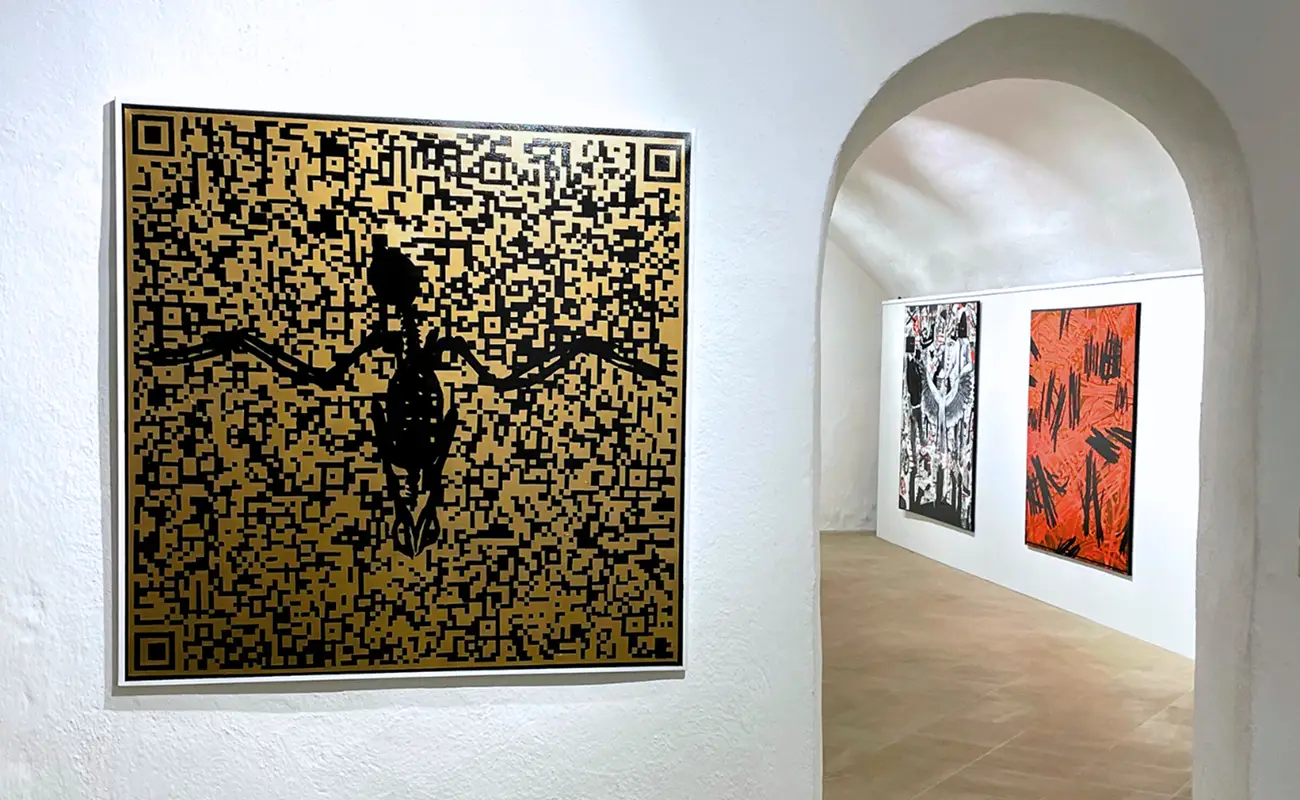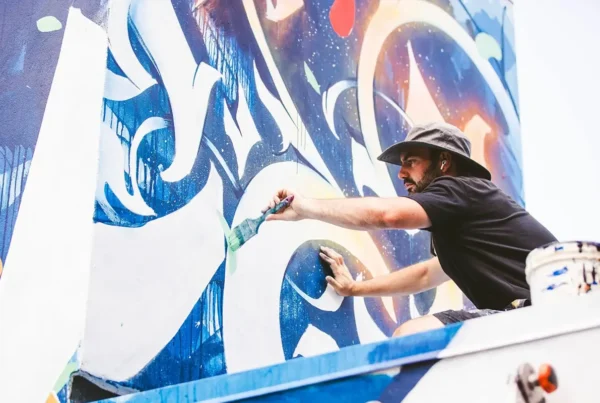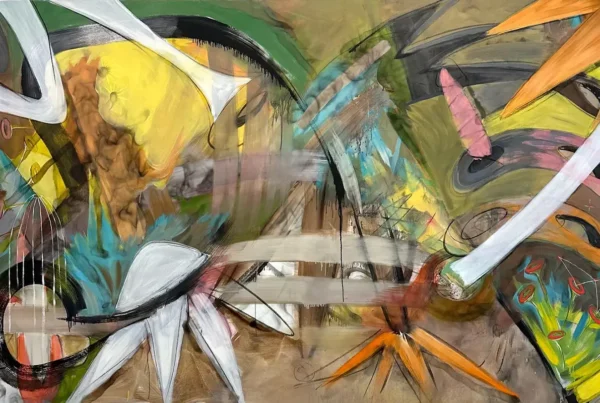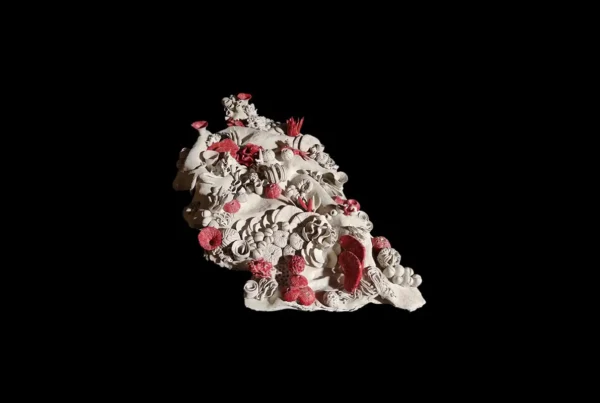“I try to combine cleverness, humor, and aesthetics to explore themes such as urbanization, human nature, good and evil, truth, and artificial constructs.”
The Artist in Transit: Roots, Shifts, and Early Sparks
Raphael Mur‘s story begins in Altötting, Germany, where he was born in 1992 to an Italian father and Danish mother. His early life unfolded across a mosaic of places, as his family frequently relocated between Hamburg and the alpine region of South Tyrol. Now living and working in Brixen, South Tyrol, Mur’s artistic journey is steeped in the shifting landscapes and emotional textures of his upbringing. The ever-changing backdrop of his childhood was marked by the entrepreneurial spirit of his parents, who, while raising five sons, relentlessly pursued their ambitions. Their resilience and commitment to personal dreams left a lasting impression on Mur, shaping his understanding of dedication and creative pursuit from a young age.
As he grew older, the natural terrain of South Tyrol began to leave a deep imprint on his inner world. Towering mountains, dense forests, and traditional craftsmanship surrounded him, becoming visual motifs that would later find expression in his artworks. His grandmother’s fascination with birds and his grandfather’s vivid storytelling—particularly about Tyrolean myths—infused his imagination with a mix of natural beauty and eerie folklore. These early influences prompted him to draw fervently, using sketching as a tool to process both the outer world and his inner life. Animals, machinery, and human figures filled his early pages, offering him a way to navigate and decode the complexities of existence.
A defining moment in Mur’s adolescence came at the age of 13, when his mother fell seriously ill. In response, he turned to books on science, anatomy, and the natural world, seeking comfort through knowledge. This drive to understand chaos through structure remains a vital part of his creative process. At 15, a pivotal encounter with Austrian-Kosovar painter Dalip Kryeziu marked a turning point. Kryeziu’s recognition of Mur’s early oil paintings led to an invitation to his studio, an opportunity that would later shape Mur’s professional path. Though initially enrolling at the Academy of Fine Arts in Munich under Karin Kneffel, Mur eventually abandoned the academic route and rejoined Kryeziu in Butzbach. There, immersed in the day-to-day rigors of a working studio, he began to grasp the true weight and promise of the artist’s life.
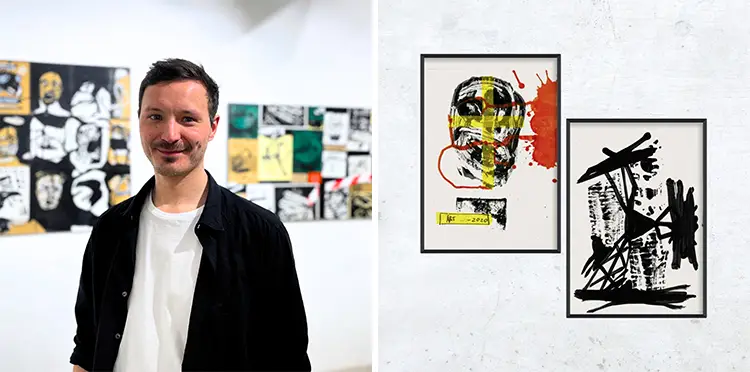
Raphael Mur: Tensions, Themes, and the Art of Duality
Mur’s artistic output is rooted in traditional techniques but consistently pushes the boundaries of medium and meaning. He creates on surfaces ranging from premium paper and canvas to cardboard, wood, and even metal. His tools are just as varied: oils, acrylics, aerosol sprays, and markers—all employed to forge works that are dynamic and densely layered. Alongside his two-dimensional pieces, he also sculpts in clay and wood, broadening the scope of his expression. Despite this variety, his aesthetic remains cohesive, grounded in a blend of geometric clarity and organic chaos. His studio practice, vibrant and full of kinetic energy, often involves moving between multiple pieces simultaneously, fostering both momentum and the burden of seeing every project to completion.
At the core of Mur’s visual language is an exploration of the fragile and often contradictory relationship between humanity and the natural world. His recurring imagery—particularly birds, textured surfaces, and intricate, abstract structures—serves as a framework for examining deeper questions about urbanization, morality, identity, and artificial constructs. Rather than offering clear-cut narratives, his works entice the viewer into an active engagement. Through complex compositions and visual layering, he encourages the eye to drift, discover, and rediscover—a technique he describes as evoking the “image within the image.” The viewer’s gaze is never static; it’s drawn into a rhythm of motion, allowing each piece to unfold over time rather than reveal itself all at once.
A key example of his artistic philosophy is embodied in “Fly No More,” a work created for his 2025 exhibition Aufwind in South Tyrol. This large-scale collage and acrylic painting features two anonymous men holding a dead eagle aloft like a hunting trophy. The juxtaposition of lifelike figures against a fragmented, painted-over collage background intensifies the emotional weight of the scene. The work is both confrontational and reflective, serving as a critique of the way humans exploit nature’s grandeur without reverence. It represents a culmination of Mur’s dual painterly techniques—merging realism with abstraction—and encapsulates his broader themes of disconnection, loss, and the manipulation of symbols once held sacred.
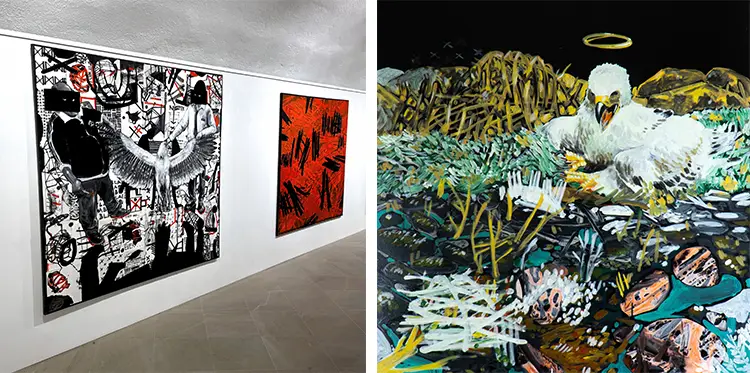
Anchored in Motion: Process, Environment, and the Act of Making
Mur’s creative environment is one of movement, multiplicity, and deep focus. His studio is a space where silence alternates with music, and where his materials are dictated more by availability and impulse than by strict planning. Essential to his process is the presence of strong black coffee, a companion during his nocturnal working hours. Whether shifting between a half-finished painting and a fresh sculpture or diving into the intricate texture of a canvas, Mur thrives on a sense of fluidity. Paradoxically, distraction for him is often just more work—new projects born out of restlessness, offering both escape and deeper immersion.
Despite the intensity of his workflow, nature remains his constant refuge. Stepping into the forest allows him to recalibrate, to distance himself from the demands of the studio and return to the source of much of his imagery. His connection to the natural environment isn’t merely inspirational—it’s foundational. The sensory experience of being outdoors, the sounds and smells, the weight of silence in a wooded area—all of it feeds his visual memory and seeps back into his work. It’s a rhythm of output and retreat, creation and reflection, that fuels the continuity of his practice.
Although Mur’s primary medium remains acrylic on canvas, his artistic curiosity is far from confined. He is open to new approaches and has experimented with found materials to construct sculptural works—an echo of the “objets trouvés” and readymades that influence his ethos. This willingness to cross material boundaries signals a broader evolution in his art-making. Recently, he has begun envisioning a series of sculptures that push these experiments even further. One such vision—already in progress—involves crafting a life-sized skeletal bird of prey from clay and metal. The shift from painting to sculpture, he explains, forces a different pace and awareness. Unlike painting’s immediacy, sculpture demands presence, patience, and a physical dialogue with form.
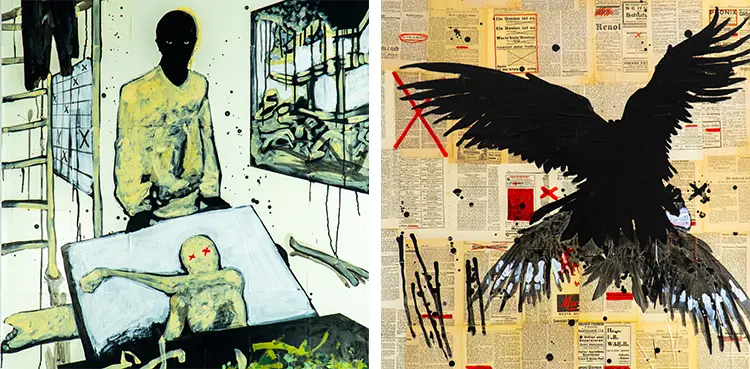
Raphael Mur: Lines of Legacy, Layers of Influence
While Mur’s visual vocabulary is distinctly his own, it is deeply informed by a wide array of artistic influences. Chief among them is Dalip Kryeziu, whose mentorship has shaped both the philosophical and technical aspects of Mur’s development. Kryeziu’s guidance introduced him not just to the tools of the trade, but also to the uncompromising realities of sustaining an artistic career. The bond they share continues to resonate in Mur’s approach to his work, from the seriousness of his studio practice to the boldness of his thematic choices.
Mur’s admiration extends to both local and international figures. From his native South Tyrol, he cites artists like Gotthard Bonell as meaningful sources of inspiration. On a broader scale, the raw intensity and gestural power of American Abstract Expressionism have left a significant mark on his stylistic evolution. He also finds himself drawn to the sharp, socio-political edge of American Pop Art and the introspective critiques offered by German capitalist realism. Artists like Anselm Kiefer, Neo Rauch, Gerhard Richter, and Eric Fischl serve not just as reference points but as complex mirrors in which Mur finds elements of his own voice—particularly in their ability to balance formal mastery with conceptual weight.
His interest in artistic lineages is not nostalgic; it’s analytical and inquisitive. He examines how these artists manipulate narrative, texture, and symbolism, then interprets those strategies through his own lens. The result is a body of work that feels both steeped in art history and driven by urgent contemporary questions. Rather than mimicking his influences, Mur filters them through the filter of his lived experience—a life shaped by movement, familial strength, ecological wonder, and the unshakable need to make sense of it all through form. In doing so, he not only pays tribute to those who came before him but carves out a place within that ongoing dialogue, his voice resonating in every brushstroke and sculpted edge.
